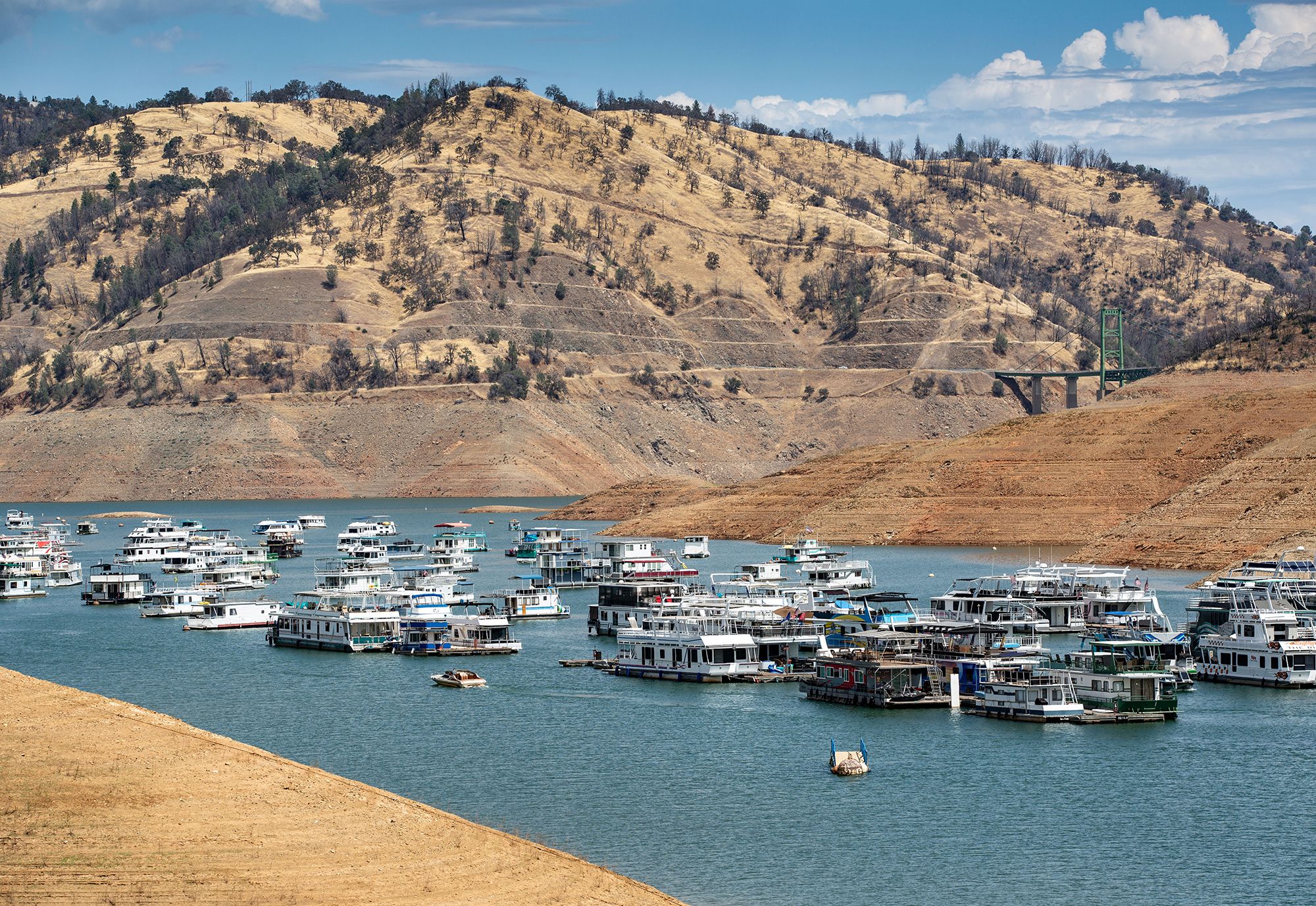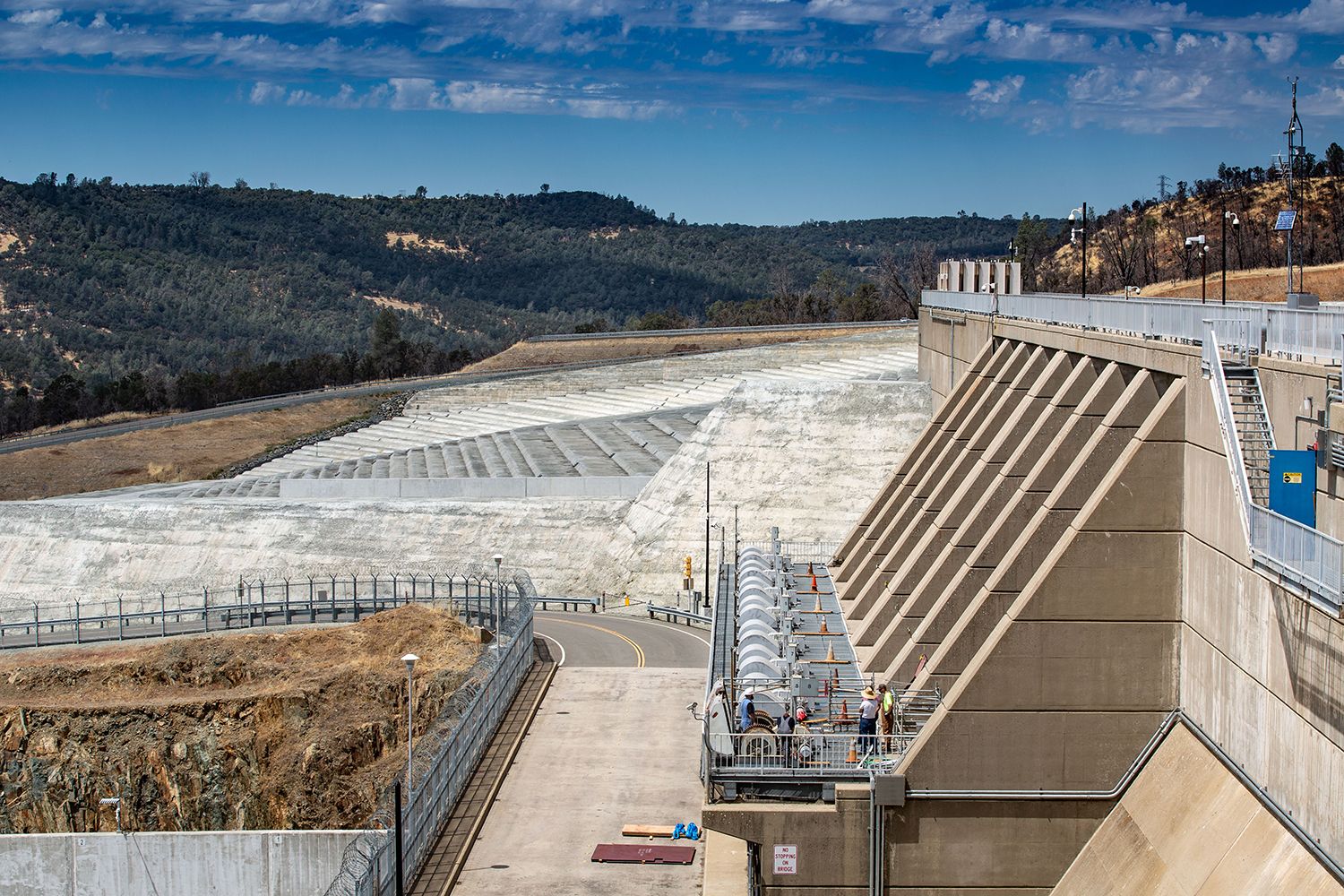It's been a total reversal of fortune this year for Lake Oroville and the recreational houseboaters who like to hang out on the reservoir, with the water level now over 100 percent of its historical average. But Lake Oroville is returning to a point of too much of a good thing.
Butte County's Lake Oroville, which is the second-largest reservoir in California, has been used as a kind of drought barometer over the last several years. And dramatic photos captured it at its historic low point in 2021. It was obvious by last month that the reservoir would fill up again this winter/spring, and all the marinas that had to be closed down two years ago because they were no longer near the actual water are reportedly back open.
"There's two kinds of water emergencies... when you have too much and when you have too little," says Jay Lund, a water management expert at UC Davis, speaking to KPIX. "And sometimes we have to worry about both in the same year. And this is one of those years."

Last year at this time, Lake Oroville had 1.6 million acre-feet of water stored, compared to almost 2.7 million acre-feet now. The California Department of Water Resources (DWR) says the reservoir is at 75 percent of its capacity, and the surface is at 838.59 feet above sea level — at capacity it would be at 900 feet. So, that's a little more than 61 feet to go, and this is before this next atmospheric river hits, and before any real snowmelt runoff has begun from the Sierra and foothills.
In mid-February, Lake Oroville was at 69 percent of capacity, and it's risen almost twenty feet since then.
Oroville Dam experienced a crisis in February 2017, which was also a rainy winter. Cracks had been observed in the dam's main spillway at least two years prior, but when the spillway needed to be engaged that winter, the concrete chute quickly began breaking apart. The rushing water — necessary to keep the reservoir from overflowing completely — threatened to further compromise the hillside out of which the dam was built, and the situation worsened when an "emergency spillway," which was basically just a dirt berm next to the main spillway, had to be engaged.

The crisis led to an evacuation of 188,000 downstream residents, as officials worried the dam might just burst. But that crisis was averted, and led to a $1 billion emergency fix for the spillway. The spillway was basically rebuilt over the next two years, and was reportedly ready to deal with another water emergency in 2018 but that never came.

The last time the new spillway was tested and put into use was in April 2019, and we've basically been in a drought ever since.
As KRCR reports, via DWR officials, the spillway may need to be put into use as early as Friday, as rain runoff could quickly begin to fill the reservoir. Officials say this would just be a small spill, but the spillway is "fully equipped" to handle bigger releases of water as needed.
Hopefully there won't be any drama this spring and the spillway will work just fine, but that dramatic scene in 2017 is not easy to forget.
Previously: Lake Oroville Is On Its Way to Filling Up Again This Spring, After Several Dry Years
Top image: In an aerial view, a truck crosses Lake Oroville on the Bidwell Bar Bridge on February 14, 2023 in Oroville, California. Amid torrential rain at the start of the year, the water level at Lake Oroville, the state's second largest reservoir, has risen from historic lows to 821.15 feet mean sea level, or 69 percent of full at 900 feet. (Photo by Justin Sullivan/Getty Images)

